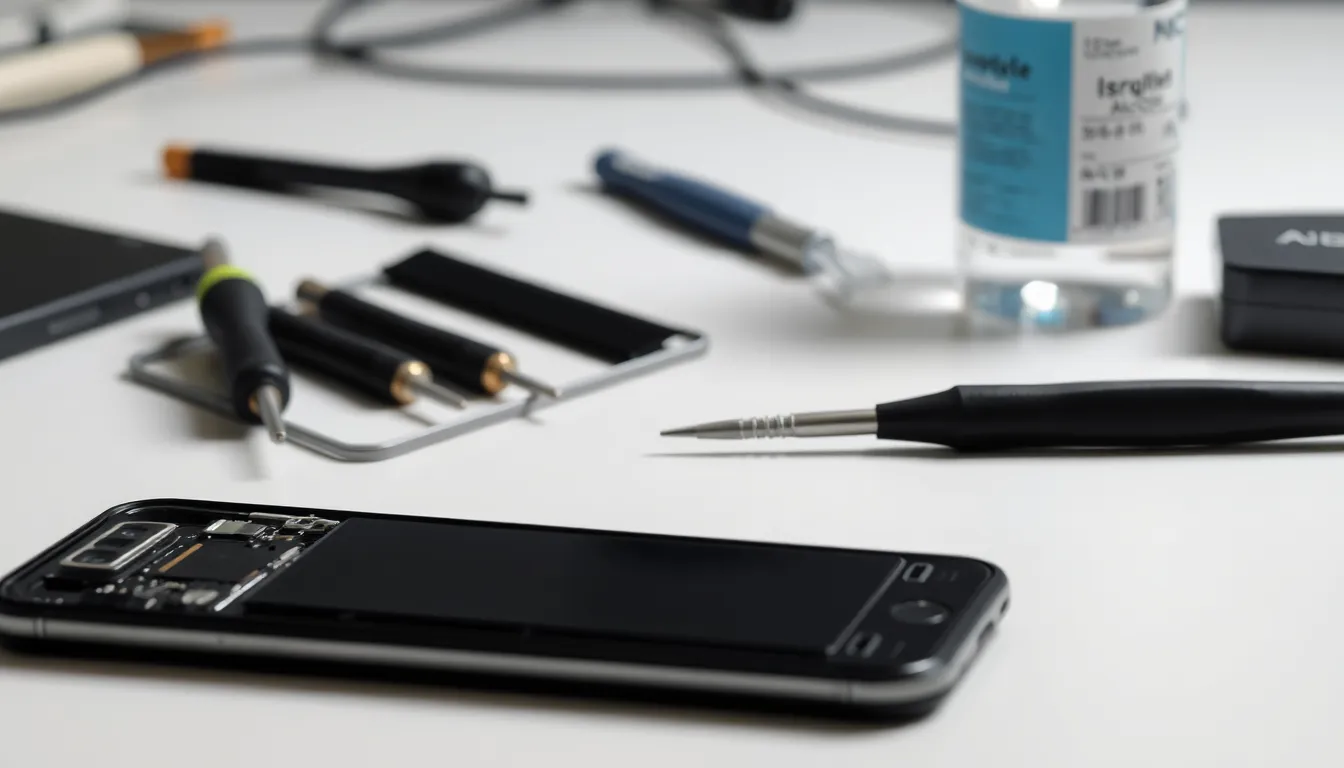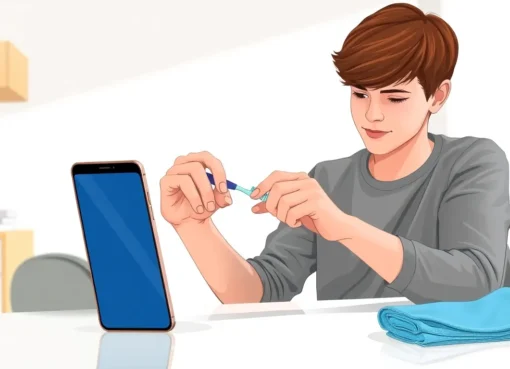How to Fix a Phone: Simple Tips and Tricks for Quick DIY Repairs

In a world where smartphones have become an extension of ourselves, a malfunctioning device can feel like a personal crisis. Whether it’s a cracked screen that resembles a spider’s web or a battery that drains faster than your will to exercise, fixing a phone can seem daunting. But fear not! With a little guidance and a sprinkle of humor, anyone can tackle these tech troubles like a pro.
How to Fix a Phone
Smartphones can experience various issues due to hardware and software problems. Recognizing these difficulties aids in troubleshooting effectively.
Hardware Problems
Cracked screens remain a frequent hardware issue, often resulting from drops or impacts. Battery issues occur when the device doesn’t hold a charge or drains quickly. Faulty charging ports can also prevent devices from powering up. Overheating often signals internal problems, with excess heat potentially damaging components. Lastly, audio issues may arise from speaker malfunctions or headphone jack problems, impacting user experience.
Software Problems
Outdated software can lead to performance lags. Applications freezing often stems from compatibility issues or software bugs. System crashes may occur when the operating system encounters critical errors. Malware infections can compromise device security, making it susceptible to data breaches. Lastly, user interface glitches often disrupt usability, making navigation frustrating. Detecting these software issues allows for timely fixes, enhancing overall device performance.
Preparing for the Repair

Preparation plays a vital role in the smartphone repair process. Taking the time to gather tools and back up data ensures a smoother experience.
Gathering Necessary Tools
Gathering the right tools simplifies the repair process. A small screwdriver set with various bits is essential for most smartphone models. A plastic pry tool aids in opening the phone without causing damage. Additionally, having tweezers can help handle small components. Using isopropyl alcohol for cleaning circuit boards prevents shorts, while anti-static wristbands protect sensitive parts from static electricity. Organizing these tools in a designated workspace reduces frustration, allowing for a more efficient repair.
Backing Up Your Data
Backing up data before any repair protects valuable information. Users can back up contacts, photos, and important files using cloud services or external storage devices. iCloud and Google Drive offer seamless options for cloud storage. Creating a complete system backup ensures all applications are preserved. Before starting any repair, checking that the backup completed successfully adds peace of mind. Data security is crucial, as repairs can inadvertently lead to data loss.
Step-by-Step Guide to Fixing a Phone
Fixing a phone involves several methods, ranging from troubleshooting simple issues to replacing hardware components. Each step provides valuable insights into restoring functionality.
Troubleshooting Basic Issues
Start with checking the battery connection, as loose connections frequently cause power problems. Restart the phone to resolve minor software glitches, which often restore normal function. Verifying software updates can fix performance issues, ensuring optimal operations. If the screen is unresponsive, perform a hard reset, pressing the appropriate button combination for the device. Checking for app updates may solve freezing issues, improving usability. Identifying operating system bugs requires running diagnostics, which can reveal underlying problems and lead to effective fixes.
Replacing Common Hardware Components
Replacing a cracked screen usually requires purchasing a screen replacement kit, ensuring compatibility with the phone model. Gather necessary tools like a small screwdriver set and plastic pry tools before starting the process. Removing the old screen demands careful use of pry tools, as excessive force may damage internal components. In cases of a faulty battery, ensure the new battery is genuine for safety and performance. Replacing charging ports involves careful detachment of fragile connectors and soldered joints, taking time to avoid further damage. Verifying that components function correctly after replacement guarantees successful repairs, restoring the phone’s full capabilities.
When to Seek Professional Help
Knowing when to seek professional help can save time and prevent further damage to a smartphone. Some issues surpass basic fixes and demand expert intervention.
Identifying Complex Problems
Recognizing complex problems is crucial before attempting repairs. Frequent system crashes and persistent application failures often indicate deeper software issues. A device’s overheating may signify hardware failure or battery malfunctions. When physical damage like shattered screens or water exposure occurs, the safest course of action involves professional evaluation. Quite often, unresolved problems can worsen with DIY fixes, leading to costly repairs. Users should monitor their smartphones for consistent warning signs. If doubts arise about the problem’s severity, contacting a professional ensures a proper diagnosis.
Finding a Reliable Technician
Finding a reliable technician plays a significant role in effective smartphone repairs. Start by assessing online reviews and customer testimonials to gauge previous service quality. Local repair shops frequently offer personalized assistance, but ensure they possess necessary certifications and experience. Ask for warranty details on repairs to secure future support. Knowledgeable technicians can quickly identify issues and provide cost-effective solutions. Use social media or community forums to seek recommendations from trusted sources. Moreover, consider choosing technicians who specialize in specific phone brands or models for optimal service. A clear communication line with repair professionals fosters trust and satisfaction.
Conclusion
Fixing a smartphone can feel overwhelming but it doesn’t have to be. With the right tools and a bit of patience anyone can tackle common issues and restore their device. Preparation is key to a smooth repair process and ensuring data is backed up offers peace of mind.
Recognizing when a problem requires professional help is equally important. Some issues may indicate deeper problems that need expert attention. By staying informed and proactive users can enjoy their devices to the fullest while minimizing downtime. Embracing the repair journey not only saves money but also empowers users to take control of their technology.



